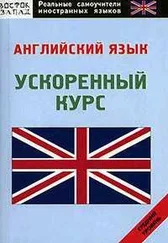Who (to tell) workers where (to work) or what occupation to choose? Who (to declare) haw many cars should (to produce) and how many homes should (to built)? Who (to specify) the predominant style of women’s dresses or men’s suits?
The greater the degree of competition the more these matters (to decide) impersonally and automatically by the price systemor the market system. This may ( to view) as a system of rewards and penalties. Rewards (to include) profits for firms and people who (to succeed). Penalties (to include) losses, or probably bankruptcy, for those who (to fail). The price system (to be) fundamental to the traditional concept of market economy.
The price system basically (to operate) on the principle that everything that (to exchange) – every good, every service, and every resource – (to have ) its price. In a free market with many buyers and sellers, the prices of these things (to reflect) the quantities that sellers (to make) available and the quantities that buyers (to wish) (to purchase).
Thus, if buyers (to want) (to purchase) more of a certain good than suppliers (to have) available, its price (to rise). This (to encourage) suppliers (to produce) and (to sell) more of it. On the other hand, if buyers (to want) (to purchase) less of a certain good than suppliers (to prepare) (to sell), its price (to fall). This (to encourage) buyers (to purchase) more of it.
This interaction between sellers and buyers in a competitive market, and the resulting changes in prices, (to be) what most people (to refer) to by the familiar phrase “supply and demand”.
1. Read the text once again and answer the following question: “What role does the price system play in the market economy?”
Ex. 16. Study the following words and word combinations. They are used when you are to describe different trends of economic development. Consult a good dictionary and put down all their derivatives. Make your own sentences using these words. You can do it in the form of a question to your partner.
increase, raise, put up, step up, extend, expand, rise, grow, soar, boom;
decrease, drop, put down, cut, reduce, fall, go down, decline, collapse, slump; remain stable, hold, maintain, stay constant.
to stand at
to reach a peak of
dramatic(ally)
rapid(ly)
quick(ly)
vast(ly)
huge(ly)
enormous(ly)
substantial(ly)
considerable(ly)
significant(ly)
moderate(ly)
gradual(ly)
slight(ly)
a little
slow(ly)
Ex. 17. A picture is worth 1000 words. Economists, being efficient, like to present ideas in graphs, which are a type of picture. But graph is worth 1000 words only if a person looking at it knows the graphical language (graphish). Study the following information to be able to read any graph. Find the Russian equivalents for the highlighted words.
Graphs are used in two ways: 1. to present an economic model or theory which focus on hypothetical relationships; 2. to present real-world data visually. Actually, these two ways of using graphs are related. They are both ways of presenting visually the relationship between two things.
Graphs are built around a number line, or axis(axes, pl). Axes are called vertical and horizontal. We can plot the information on two axes. When we connect two points we have a line. Even if the line is straight, economists call any such line drawn on a graph a curve. A curve can be a linear curve, a downward-sloping curve, an upward-sloping curve, a nonlinear curve.
Economists use the following graphs in presenting actual economic data:
Line graph Bar graph
Flow chart Pie chart
Ex. 18. Give the English equivalents to the following.
Приобретает все возрастающее значение; альтернативные издержки; при таких условиях; который должен быть принесен в жертву; постарается быть самодостаточным; тарифы; квоты на импорт; условия торговли; нетарифные барьеры; навязывать ограничения; защитить отечественную промышленность; таможенные пошлины; налог на единицу товара; в определенный период; установить более высокий стандарт качества на товары.
Ex. 19. Translate the following sentences into English.
1.Это следует рассматривать с точки зрения действия всей системы. 2.Одна из ее функций – эффективное размещение ресурсов. 3.Рыночная цена – результат взаимодействия спроса и предложения на товары и услуги. 4.Экономика не может существовать без системы распределения. 5.Все решения – это отражение всех компонентов культуры. 6.Когда мы говорим о государственном секторе, мы подразумеваем бюрократический аппарат. 7. Если происходит нарушение закона, они знают, что у них есть защита. 8.Чтобы успешно конкурировать, организация должна иметь доступ к современным технологиям. 9.Все организации зависят от предложения рабочей силы. 10.Руководитель должно четко реагировать на все изменения в деловой среде. 11.В конечном итоге, успех организации определяют потребители.
Ex. 20. Let’s review the core concepts of economics. Translate the following into Russian.
1. Economicsis the study of how people, individually and collectively, allocate their limited resources to try to satisfy their unlimited wants.
2. Scarcityoccurs because human wants exceed the production possible with our limited time and resources.
3. A goodis any item or service that satisfies a human want and, in so doing, adds to human happiness.
4. Productionentails using technology to apply energy to materials in ways that make the materials more valuable, or that otherwise help satisfy human wants.
5. Labourresources are the physical and mental talents that people can make available for production.
6. Opportunitycostis the value of the best alternative surrendered when a choice is made.
7. Absolute pricesare prices in terms of some monetary unit.
8. Relative pricesare the prices of goods or resources in terms of each other, and are computed by dividing their absolute prices by one another.
9. Economic efficiencyis achieved when we produce the combination of outputs with the highest attainable total value, given our limited resources.
10. Inputsare resources used in the production process, such as labour and raw or semifinished materials.
11. Outputsare transformed materials; the results of production.
12. Demandis the quantity of a specific good that people are willing and able to
buy during a specific period, given the choices available.
Читать дальше












